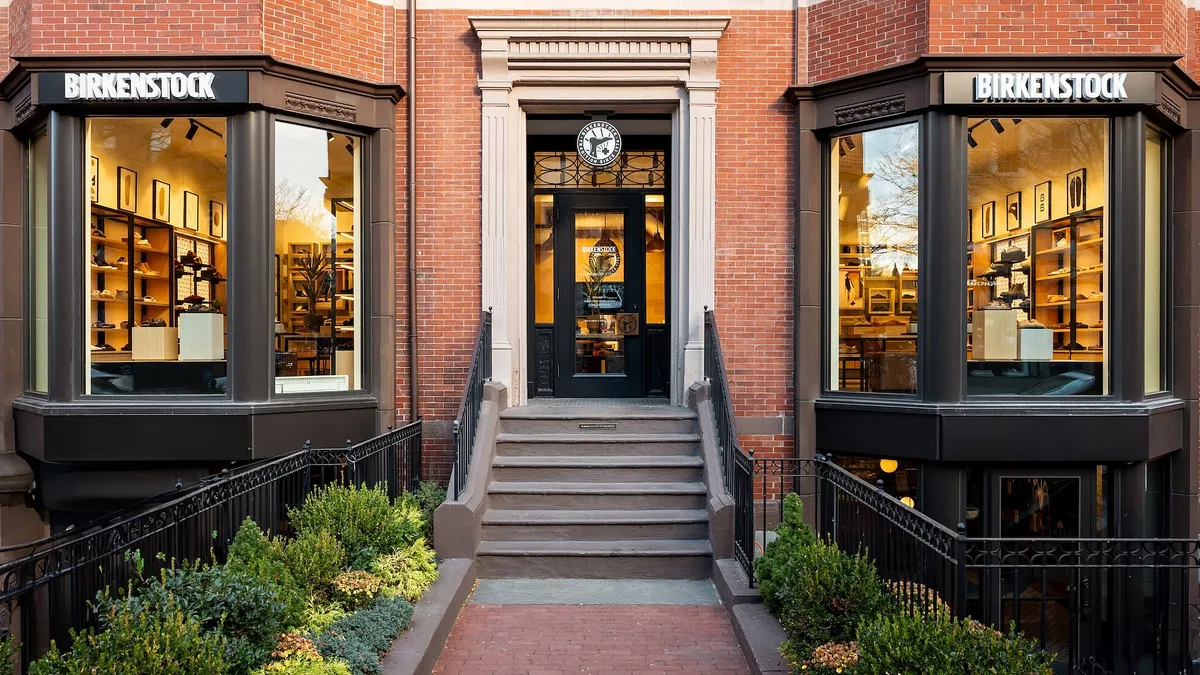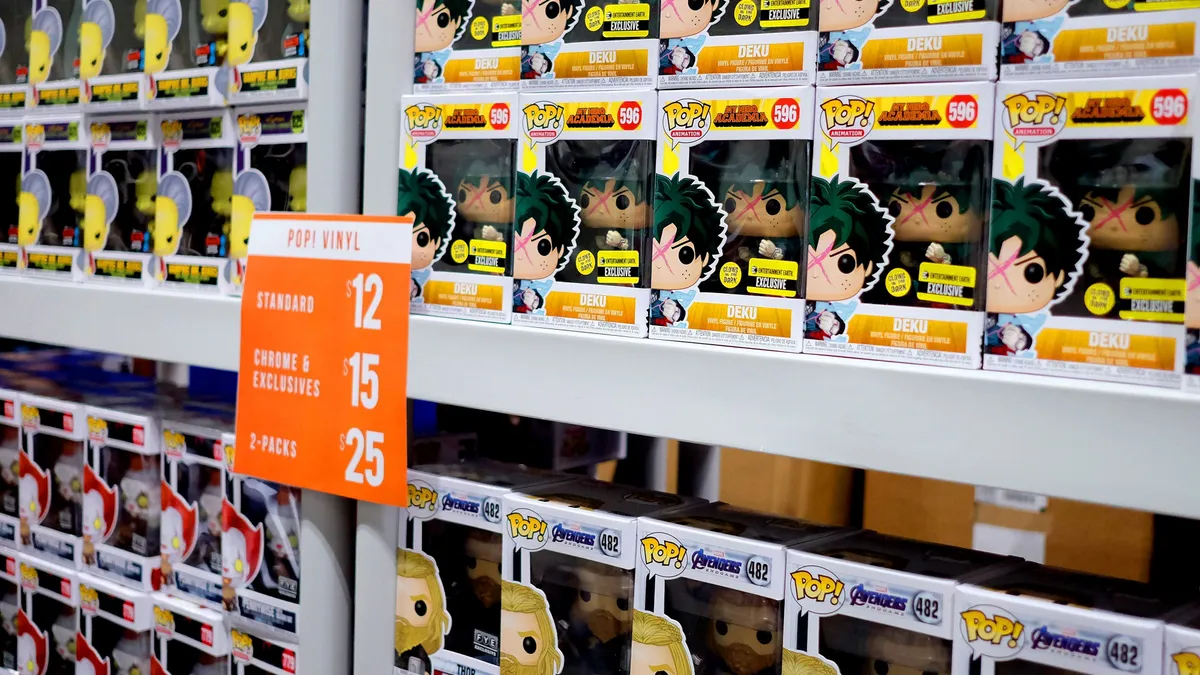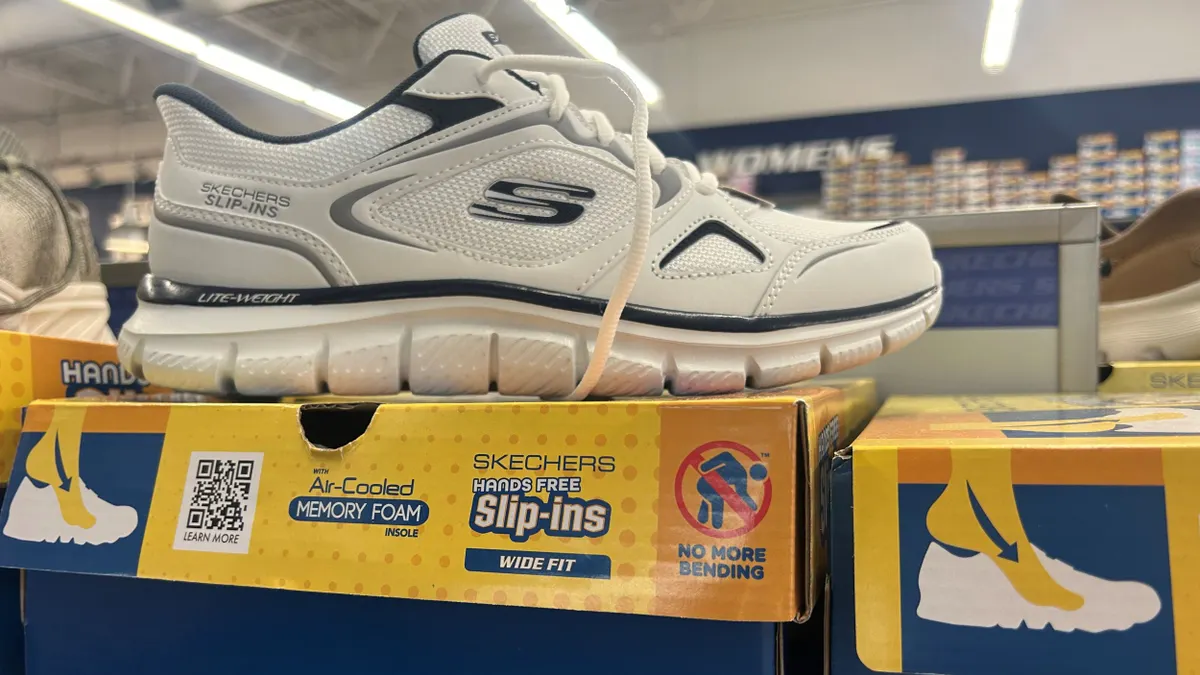Over the course of 15 years, Charming Charlie was founded, grew to nearly 400 stores, filed for bankruptcy and now has filed again, its second trip marking the ultimate end of the chain's life.
Charming Charlie filed for Chapter 11 a second time Thursday, a little over a year after exiting bankruptcy in 2018. This time around, the apparel and accessories retailer plans to close all of its remaining 261 stores and wind down its business in bankruptcy.
Numerous factors, including "onerous leases" and liquidity problems, made it "increasingly difficult" for the retailer to pay its expenses (including $47.4 million in annual rent costs) and $81 million in debt, Charming Charlie CFO Alvaro Bellon said in court documents.
Brand identity becomes a liability
Founded in 2004 by Charles Chanaratsopon, the retailer made its name largely by its approach to merchandising, grouping products together by color and pricing them between department stores like Macy's and teen retailers like Claire's. (Its core customers were women between 35 and 55, who made up 38% of its base.)
The merchandising took a "sophisticated inventory system" to position products by color (spanning 26 hues in all) and theme, according to Bellon. But Charming Charlie's calling card ultimately became a liability.
"Although this approach initially provided Charming Charlie with a strategic benefit, and engendered significant brand loyalty, it eventually caused Charming Charlie to be saddled with excess merchandise in underperforming color offerings," Bellon said.
Caught in a death spiral
The pending demise of Charming Charlie is a virtual checklist of everything that can go wrong in retail these days. Before its first Chapter 11, the retailer grew its brick-and-mortar footprint too quickly, built out an over-broad vendor base and ran into broad structural changes in the industry, as customers turned away from malls and other physical retail outlets.
To save money, Charming Charlie hacked away at its workforce, sometimes leaving just one associate to run a store for hours at a time, Bellon said. That hurt the retailer's ability to convert traffic into sales and also led to poaching of its remaining employees.
To help with liquidity, the company "hastily" expanded its inventory to boost the money available under its asset-backed loan. But that created piles of "merchandise that was either off brand or not of the quality their customers had come to expect," Bellon said.
After filing for Chapter 11 in December 2017, the company got rid of 100 underperforming stores. The company, Bellon noted, was still left with numerous underperforming stores at the insistence of landlords when negotiating for concessions elsewhere in their portfolio.
The road to Chapter 22
Bankruptcy allowed Charming Charlie to shed 45% of its funded debt and handed control of the company over to a new set of owners. Yet its problems persisted.
Charming Charlie's Post-Ch. 11 Owners
| Name of equity holder |
|---|
| THL Credit |
| Apollo Management |
| Medley Capital |
| Cion Investment Management |
| Russell Investments |
| Stichting Blue Sky |
| Redding Ridge Asset Management |
| Congruent Investment Partners |
| FLP Investments |
| LCM Asset Management |
| Stone Tower Capital |
Source: Court documents
After exiting bankruptcy, the retailer was "saddled with undesirable merchandise, unfavorable trade terms, and an undercapitalized balance sheet," according to Bellon. It also had to contend with tariffs, severe weather events (which Bellon said cost them $1.1 million in sales), and customers with smaller tax refunds.
Compounding its issues, suppliers didn't ease the terms they demanded from Charming Charlie (such as deposits and cash-on-delivery) until several months after it exited. That made it harder to get better-quality merchandise onto its shelves.
It all added up to an unmanageable challenge for the retailer. In February, it brought in financial advisers to review its business plan and review its options and in the spring refinanced a loan. Debtwire reported that the retailer was still facing a "liquidity crisis." By the time Charming Charlie filed for Chapter 22 this week, it was clear the company wasn't going to make it, according to Bellon.
As it prepares to wind down, the retailer has hired Hilco and SB360 Capital Partners to run its going-out-of-business sales, which are expected to generate sales of $30 million. The company currently has 856 full-time and 2,486 part-time employees.
Growing roster of liquidations
Now Charming Charlie joins the ranks of retailers this year to fail ultimately after a previous shot through bankruptcy. That list includes Payless and Gymboree, reminders that even the flexibility bankruptcy allows retailers to quickly shed debt and close underperforming stores can't always fix underlying financial and operational problems.
Others, including Shopko and Charlotte Russe, have also liquidated in bankruptcy this year. (Charlotte Russe recently opened a handful of new stores after its brand property was sold in Chapter 11 to a fashion company.)
While every retail bankruptcy is slightly different — as are the reasons for a retailer to liquidate in bankruptcy — the fundamental dynamics are often similar. If no stakeholder steps up to put in new capital, or if the most powerful players can't agree on the retailer's future prospects, often the business will have no choice but to wind down.
In a bankruptcy, "[t]he basic question is, are they worth more alive or dead," Joshua Friedman, global head of restructuring data at Debtwire, told Retail Dive earlier this summer.
In a client note emailed Friday, B. Riley FBR analyst Susan Anderson wrote that as store closures and retail liquidations accelerate this year over last year, strong players with healthy store fleets will benefit. That list includes American Eagle, Urban Outfitters, Chico's and others.





















